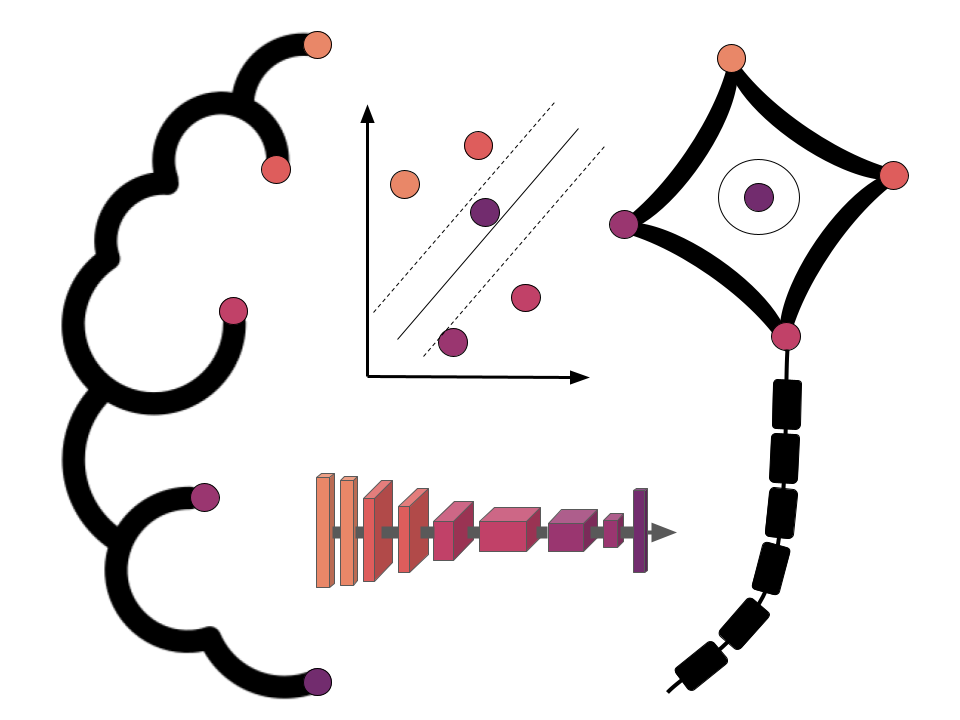Introduction II - Neuroscience
Contents
Introduction II - Neuroscience¶
Within the second part of this course, we will talk about all (not really but still a lot) things neuroscience, specifically neuroimaging techniques, their rationale, applications and underlying physics. Starting with a broad overview, we will then dive in specific details and certain common analyses methods. In some parts there will also be some interactive exercises to help you understand the material and introduce you to dedicated resources and tools.
Topics 💡👨🏻🏫¶
In the following you’ll find the objectives and materials for each of the topics we’ll discuss during this session.
Cortical maps - neuroimaging in space (& time)¶
We’ve all seen these fancy colorful images of the brain. But how are they obtained and what do they actually entail? The first section will provide a somewhat comprehensive overview of the broad field of neuroimaging and its techniques, as well as introduces important elements regarding vocabulary, notion and applications.
Objectives📍¶
What
neuroimagingtechniques do exist?What is the
physical principlethat allows us to obtain ameasurement?What is the
physiological principle, ie whatbiological aspectof thebraindo we measure?What
methodsofanalysisare needed to be able to interpret thedata?What
research questionscan be investigated with these techniques?
Materials📓¶
The respective content is provided in the section Cortical maps (you should also be able to find it in the ToC on the left), enriched with interactive graphics, videos and exercises.
Magnetic Resonance Imaging (MRI)¶
One of the most fundamental advances regarding the in-vivo and ex-vivo investigation of basically all biological tissues is magnetic resonance imaging (MRI). Specifically in neuroscience, MRI enabled research and thus understanding of the brain’s structure and function that is simply impossible with other methods. Containing a wide array of diverse methods itself such as structural, functional and diffusion weighted, MRI, as a neuroimaging technique, is at the core of many research fields ranging from development over basic and higher cognitive functions to ageing and diseases. In this section, we will explore the underlying physical and biological principles that make MRI possible in the first place, as well as introduce its core components and address specific important properties.
Objectives📍¶
Get to know four fundamental principles of MRI:
Magnetic resonanceRelaxation:T1andT2parametersImagingMRIsequencesordata acquisition protocols
Materials📓¶
The respective content is provided in the section Magnetic Resonance Imaging (MRI) (you should also be able to find it in the ToC on the left), enriched with interactive graphics, videos and exercises. Furthermore, you will find a jupyter notebook aiming to introduce the handling and wrangling of neuroimaging data using python, specifically the nibabel library.
tasks for subsequent meeting 🖥️✍🏽📖¶
Below you’ll find the tasks you should spend a look at for next week’s session.
